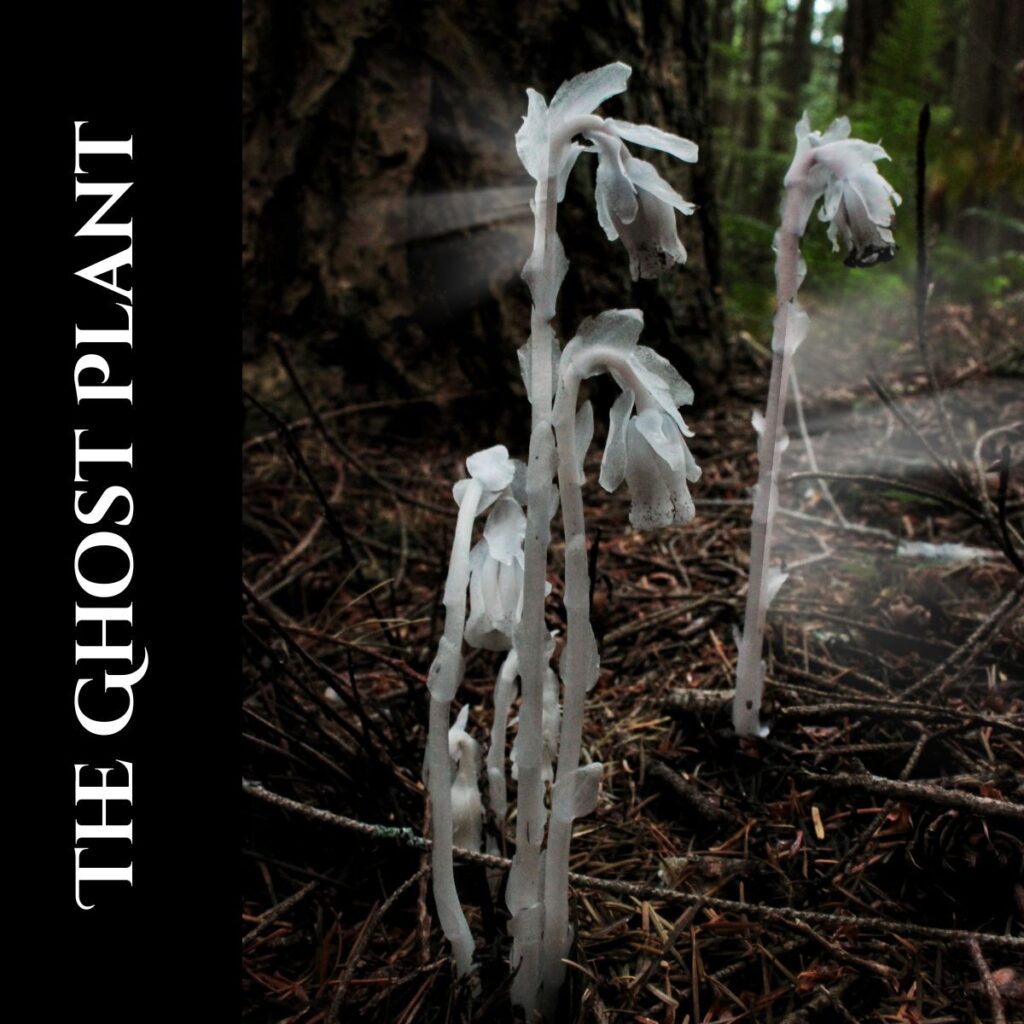The Ghost Plant (aka. Indian Pipe ; Monotropa uniflora), is a translucent, waxy white perennial that lacks chlorophyll and often appears with black flecks or pale pink shades. It features a single drooping flower atop each thin, scale-covered stem and typically grows in shaded forest environments from early summer to autumn.
✨ Some think that it glows, although this has not been proven scientifically; rather, it is though that its waxy white tissues may reflect moonlight or headlights creating an ethereal and luminous look.
Originating throughout North America, Asia, and northern South America, the species is found in mature, moist forests where it parasitizes mycorrhizal fungi for nutrients.
The entire plant has been considered edible (cooked stalks tasting like asparagus), and has limited traditional use as emergency food.
Spiritually, this plant has associations in indigenous lore and folklore. In Cherokee legend, it has been told the Great Spirit transformed feuding chiefs into Indian Pipe flowers to teach peace and emotional healing, and the plant is said to grow where conflict and sorrow are present. Another reported association in some Native American culture regard Indian Pipe as a symbol of carrying souls of the departed, representing peace and a bridge between worlds. Modern herbal traditions continue to treat it as a sacred “spirit plant,” valued for its role in emotional healing, ceremonies, and connecting with one’s inner wisdom, especially in contexts of grief, trauma, and deep transformational work.
➡️ In traditional medicine, indigenous groups have valued the Ghost Plant as a remedy for various neurological and pain conditions. Uses included the root as a sedative and nervine for convulsions, childhood epilepsy, intense nerve pain, and as a diaphoretic for fevers and spasms. The Cree chewed flowers for toothache, and extracts were historically applied for cold remedies, warts, and gynecological support.
Through scientific investigation, the Ghost Plant has been found to have various activities including nervine, sedative, anodyne, diaphoretic, antispasmodic, and analgesic effects, attributed partly to aspirin-like compounds and possible grayanotoxin content.
A recent study investigating Ghost Plant’s potential pain management properties used ethanol extracts on human breast cancer cells to test activity, finding significant biochemical differences relative to controls, independent of the ethanol solvent. Researchers sought to clarify whether grayanotoxins (neuroactive compounds found in related Ericaceae) occur in Monotropa and may help explain its historical use in ethnomedicine as an alternative to opioid analgesics.
*This content is for informational and educational purposes only. It is not intended to provide medical advice or to take the place of such advice or treatment from a personal physician.
The Ghost Plant 👻 🌿

